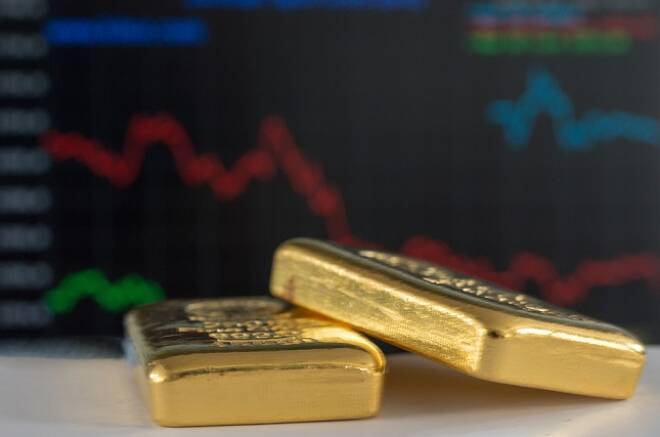Advertisement
Advertisement
Price of Gold Fundamental Daily Forecast – Buyers Defying Surge in Higher Risk Assets
By:
Despite gold putting in its best weekly performance in more than four months, some traders weren’t too impressed by the move since it occurred during a holiday-shortened, low-volume week. However, this pessimistic view was offset by support from global economic growth concerns and U.S.-China trade deal uncertainties.
Gold futures closed higher on Friday, posting their highest close since November 4, while finishing within striking distance of its last main top at $1525.20. The buying was light throughout most of the session as traders appeared to be booking profits ahead of the week-end. However, a late session surge was fueled by a plunge in the U.S. Dollar against a basket of currencies.
On Friday, February Comex gold settled at $1518.10, up $3.70 or +0.24%.
Despite gold putting in its best weekly performance in more than four months, some traders weren’t too impressed by the move since it occurred during a holiday-shortened, low-volume week. However, this pessimistic view was offset by support from global economic growth concerns and U.S.-China trade deal uncertainties.
The Friendly News
Perhaps underpinning prices were lingering concerns over the lack of details about the trade deal. With Phase One of the deal announced mid-month, trader expectations called for a finalization of the deal before the end of the year. The recent price behavior suggests investors may have grown wary with every passing headline.
“The U.S.-China trade deal, although it has a lot of positive news flowing in, has nothing yet on paper under a seal. That is keeping investors a little cautious,” said Chris Gaffney, president of world markets at TIAA Bank.
Adams Asset Management’s Brock Silvers, on the other hand, seemed to support gold by urging caution over the lack of details so far regarding the deal.
“It’s a bit strange that we have an agreement that everyone is trying to celebrate but no one wants to really tell me what’s in it,” Silvers, who is managing director at the firm, told CNBC’s “Squawk Box” on Friday. “I think the market can put up with that for a bit, we can be patient…but after next week…I think there will be some questions.”
Are Gains Being Capped?
A low volume trade environment may have been the biggest contributor to the price surge, according to some traders, because of positive comments from Washington and Beijing, and the strong demand for risky assets.
Beijing said on Wednesday it was in close touch with Washington on a trade deal signing ceremony, a day after U.S. President Donald Trump said he and Chinese President Xi Jinping would have such an event.
Both economic powerhouses made no mention of any issues with the trade deal, while acknowledging the delay is being attributed to the paperwork being translated.
Additionally, the global economic environment is boosting equities. Wall Street opened at a record high on Friday, and world stocks hovered near an all-time peak. On Friday, it was announced that profits at industrial firms in China in November grew at the fastest pace in eight months, breaking a three-month losing streak, as production and sales quickened.
Short-Term Outlook
At some point, something is going to have to give. Although gold and stocks can rally at the same time, most of the time investors choose one asset over the other. We didn’t touch on it, but perhaps investors are buying gold as a hedge against a potential stock market break. We’re not likely to know until after the holidays.
About the Author
James Hyerczykauthor
James Hyerczyk is a U.S. based seasoned technical analyst and educator with over 40 years of experience in market analysis and trading, specializing in chart patterns and price movement. He is the author of two books on technical analysis and has a background in both futures and stock markets.
Did you find this article useful?
Latest news and analysis
Advertisement
